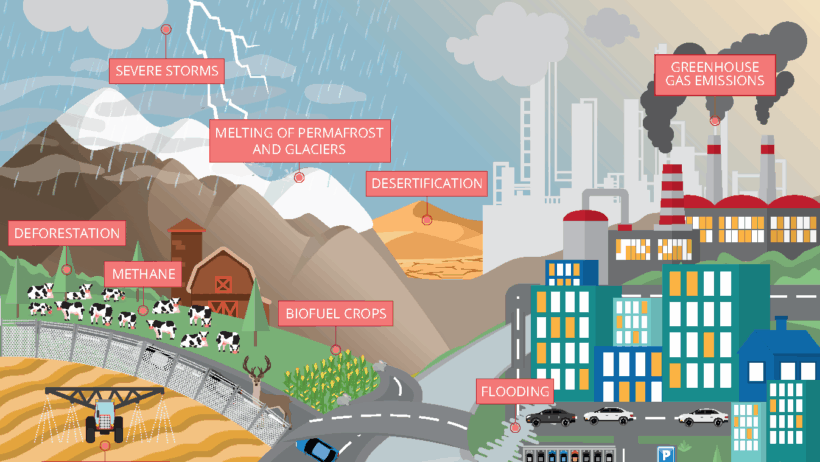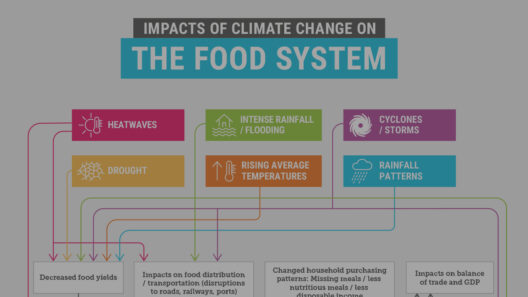The importance of soil is often underestimated, yet it is the foundation upon which all terrestrial life rests. Soil is not simply dirt; it is a complex ecosystem teeming with microorganisms, nutrients, and minerals that sustain plants, animals, and ultimately, humans. However, the delicate balance of this vital resource is under siege due to climate change. How much do we truly understand about the threats facing our soils? As we delve into this pressing issue, let us consider the challenges posed by climate change and their implications for our future survival.
The first aspect to understand is the role of soil in the broader ecosystem. Soil serves as a natural filter, regulating water flow, storing carbon, and harboring an astonishing diversity of life. These functions are indispensable in mitigating the impacts of climate change. The soil is a significant carbon sink, with the capacity to sequester more carbon than trees and the atmosphere combined. Unfortunately, disruptions to soil health from climate change compromise its ability to perform these essential functions.
One of the most pressing concerns is the increased frequency and intensity of extreme weather events triggered by climate change. Flooding can erode topsoil, wash away nutrients, and compact the earth, rendering it less fertile. Conversely, drought conditions lead to soil desiccation, reducing its microbial activity and compromising its structure. Each has a unique contribution to diminishing the soil’s efficacy in supporting plant life. This delicate equilibrium is vital for especially vulnerable agricultural systems, which rely heavily on healthy soils.
Soil degradation manifests in various forms: erosion, salinization, and loss of organic matter. Erosion, exacerbated by intense rainfall events, strips away the nutrient-rich upper layers of soil. Salinization, often a consequence of poor irrigation practices in arid regions, reduces soil fertility by increasing salt concentration. The loss of organic matter, driven by unsustainable agricultural practices and climate stresses, diminishes soil structure and nutrient availability. Each of these processes not only threatens agriculture but also endangers food security.
So, what can be done to confront these challenges? Adopting sustainable agricultural practices offers a glimmer of hope. Techniques such as crop rotation, cover cropping, and agroforestry can improve soil health and resilience. These methods enhance biodiversity, restore organic matter, and regulate water management, mitigating some of the adverse effects wrought by climate change.
Moreover, agroecological principles encourage a holistic approach. In engaging with the environment, the interconnections between soil, water, air, and living organisms become evident. For instance, integrating livestock and crop production creates a symbiotic ecosystem that enhances nutrient cycling and promotes soil biodiversity. By embracing agroecology, communities can combat the dual challenge of ensuring food security and conserving soil health amidst the uncertainties brought by climate change.
But how do we involve urban areas in this conversation? Soil health is not confined to rural landscapes; cities, too, harbor significant soil ecosystems. Urbanization has led to the creation of impervious surfaces, disrupting natural soil processes. However, urban farming presents an opportunity to rejuvenate soil in metropolitan areas. Rooftop gardens, community allotments, and green spaces not only bolster food independence but also promote the restoration of urban soils by encouraging biodiversity and carbon sequestration.
Education and advocacy also play crucial roles in this dialogue. Core to developing effective responses is the need to raise awareness among policymakers, farmers, and the general public about the plight of soils under climate change’s encroaching threat. Fostering a culture of stewardship that prioritizes soil health can galvanize individuals and communities to protect this critical resource.
In addition, governments and organizations must implement policies that recognize the intrinsic value of soil ecosystems. This can include incentives for sustainable land management practices, investments in soil conservation technologies, and fostering research initiatives that explore innovative solutions to combat soil degradation. Integrating these policies into climate action plans is crucial for developing a multifaceted approach to the challenges posed by climate change.
As we confront these challenges, it is essential to acknowledge that the road ahead will be fraught with obstacles. However, each challenge carries within it the potential for innovation and resilience. The pressing question is: Are we ready to rise to the occasion? The survival of earth’s foundation—soil—hinges on our collective capacity to implement adaptive strategies and embrace sustainable practices.
Climate change poses a threat not just to ecosystems but to the very fabric of society as we know it. The decline of soil health carries ramifications that ripple through food systems, economic stability, and ecological integrity. The stakes are high, and it is incumbent upon each one of us—citizens, scientists, farmers, and decision-makers—to take action now. The future of our planet’s soil rests in our hands, and effective stewardship must begin today, nurturing the very foundation that sustains all life on Earth.



